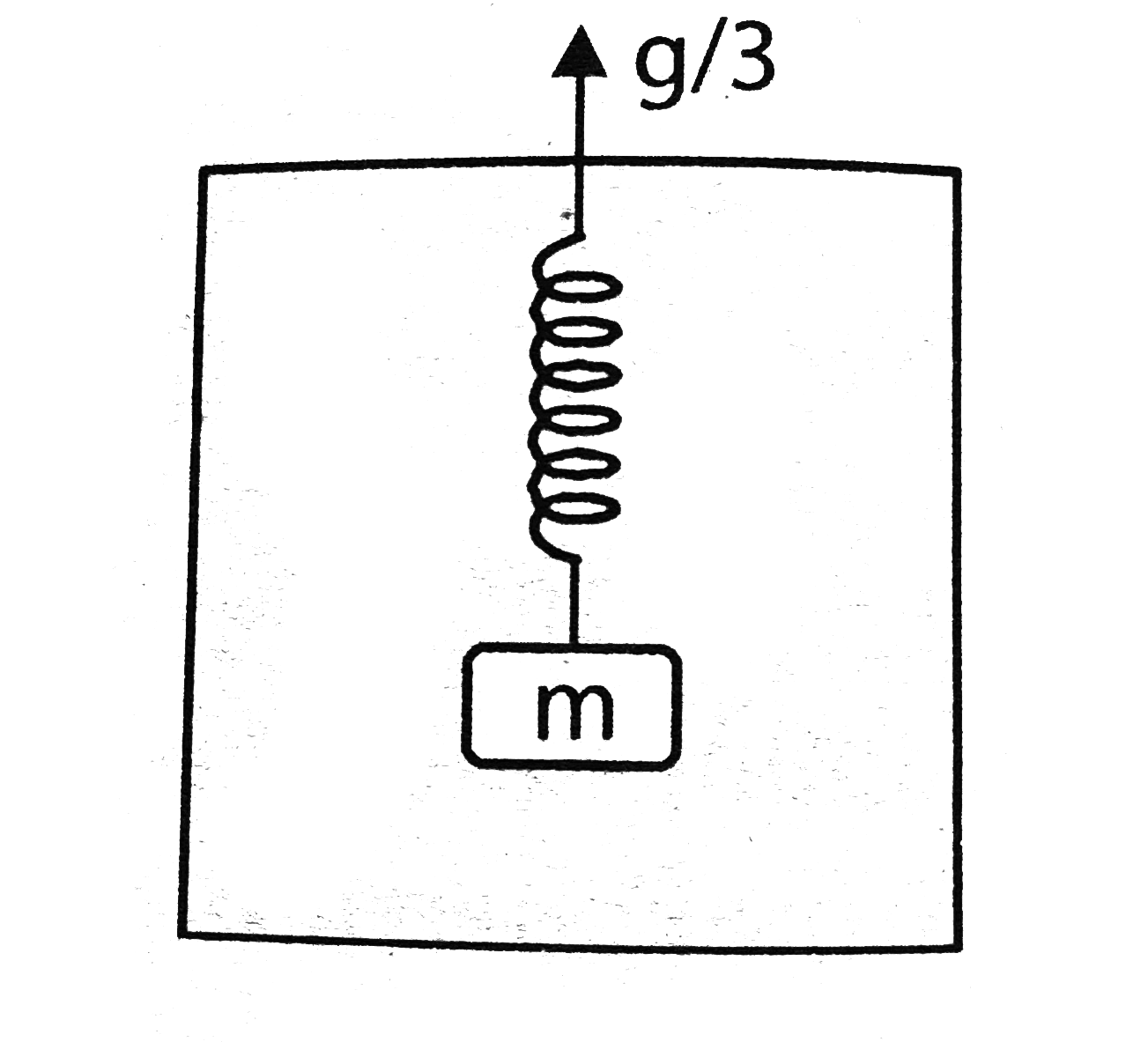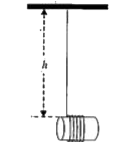A spring with one end attached to mass and the other to a rigid support is stretched and released. When is the magnitude of acceleration a maximum ?
The magnitude of acceleration is maximum at Extreme Positions.
Similar Questions
A spring with one end attached to a mass and the other to a right support is stretched and released
View SolutionA spring of spring constant 200N/m has a block of mass 1kg hanging at its one end and form the other and the spring is attached to a celling of an elevator. The elevator rises upwards with an acceleration of g/3.
When acceleration is suddenly ceased , then what should be the angular frequency and elongation during the time when the elevator is accelerating?

View Solution
Knowledge Check
A spring with one end attached to a mass and the other to a right support is stretched and released
AMagnitude of acceleration when just releases is maximumBMagnitude of acceleration, when at equilibrium position is maximumCspeed is maximum when mass is a equilibrium position.DMagnitude of displacement is always maximum whenever speed is minimumA body of weight 30N hangs from one end of a long, vertical spring whose other end is attached to a rigid support. The spring extends by 5cm when a force of 10N is applied to it. The time period of the vertical oscillations of the body is
A2√(15π)sB(π/5)√(3/2)secC(π/10)√(3/2)secD20)√(2/3)sec
Figure a) shows a spring of force constant k clamped rigidly at once end and a mass m attached to its free end. A force F applied at the free end stretches the spring. Figure b) shows the same spring with both ends free and attached to a mass m at either end. Each end of the spring in figure is stretched by the same force F.
(a) What is the maximum extension of the spring in the two cases ?
(b) If the mass in figure and the two masses in figure are released free, what is the period of oscillation in each case?

View Solutionspring of force constant k clamped rigidly at onoe end and a mass m attached to its free end. A force F applied at the free end stretches the spring. Figure shows the same spring with both ends free and attached to a mass m at either end. Each end of the spring in figure is stretched by the same force F.
(a) What is the maximum extension of the spring in the two cases ?
(b) If the mass in figure and the two masses in figure are released free, what is the period of oscillation in each case?

View SolutionFigure a) shows a spring of force constant k clamped rigidly at once end and a mass m attached to its free end. A force F applied at the free end stretches the spring. Figure b) shows the same spring with both ends free and attached to a mass m at either end. Each end of the spring in figure is stretched by the same force F.
(a) What is the maximum extension of the spring in the two cases ?
(b) If the mass in figure and the two masses in figure are released free, what is the period of oscillation in each case?

View SolutionA light vertical spring is stretched by 0.2cm when a weight of 10g is attached to its free end. The weight is further pulled down by 1cm and released. Compute the frequency and maximum velocity of load.
View SolutionA spring of force constant k and negligible mass is attached to a rigid mass m at one end and clamped to a strong support at the other. The mass is displaced a little and then released. Show that the body executes simple harmonic motion and calculate its time period. If the spring is cut into three equal pieces and the same body is supported by one such piece in a smaller way, by how much will the time period be increased or decreased?
View SolutionOne end of a string is tied to a rigid support attached to roof and the other end is wound around a uniform wheel of radius r and mass m. The string is kept vertical and the wheel is released from rest. As the wheel descends show that (i) the tension in the string is one-third the weight of the wheel, (ii) the magnitude of the acceleration of the centre of mass is 2g/3 and (iii) the speed of the centre of mass is (4gh/3)1/2

View Solution
